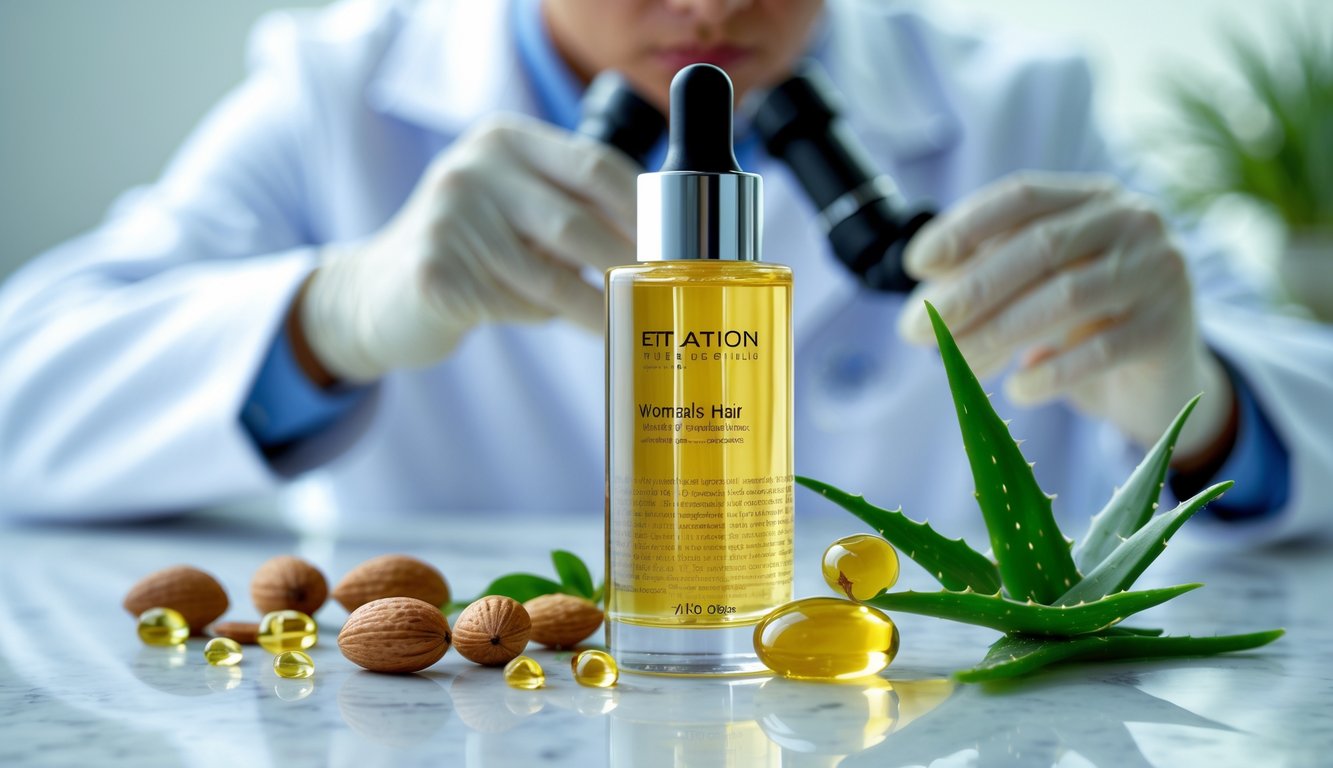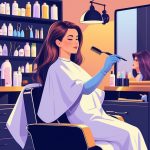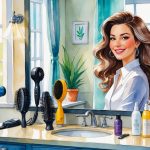
Expert Tips for Maximizing Results
Stretching out the last drops of a serum, hoping for hair miracles, just makes me question every single thing I do. Application, mixing it with other treatments, even what I eat or how much I spiral about work—it all turns into this exhausting guessing game.
Scalp Massage and Application Techniques
Honestly, why does nobody ever actually show you how to rub this stuff in? Scalp massage is always an afterthought, which is wild, because every dermatologist I’ve read (seriously, Dr. Mian, random Cleveland Clinic people, all of them) just keep repeating, “Consistency over intensity.” But who hasn’t gone at their hairline like they’re sanding a table and then freaked out about breakage? For androgenetic alopecia, it’s gentle circles with your fingertips, not some WWE move—three minutes, twice a day, on dry scalp, because apparently wet hair just doesn’t work.
Oh, and use a dropper, not your hand, unless you like wasting half your serum on your palms. I swear, every time I rush, my results get patchy and then I’m mad at myself. One trichologist told me to use a soft silicone scalp brush—unless you’ve had a transplant, then just don’t. Apparently, the new grafts are drama queens and can’t handle it.
Pairing with Other Hair Loss Treatments
If serums alone fixed hair loss, nobody would be booking hair transplants, right? I always end up layering—serum after minoxidil, because apparently order matters. Dermatologists love to argue about caffeine serums and peptides (Vegamour, Nutrafol, whatever), saying they work better together, but honestly, the proof is pretty flimsy.
Injectables? I know someone who did PRP every week and used serum daily and swore her shedding slowed down, but her iron was in the basement, so who knows. If you want to stack prescriptions, you need an actual doctor, not just a YouTube tutorial. Also, don’t skip the post-microneedling window—supposedly, absorption rates triple if you use serum after, not before. I read that somewhere. Or maybe I made it up? No, I’m pretty sure it’s real.
Lifestyle Factors for Healthy Hair
If you think a “miracle serum” is going to fix your hair while you’re living on coffee and three hours of sleep, I’ve got news. I’ve had months where just eating more iron and chicken did more for my hair than anything with a fancy label. Hydration? My trichologist once said most brittle hair is just thirsty, not broken. I kind of believe her.
Stress—ugh. Cortisol spikes, and suddenly your hair is all over your pillow. People blame their shampoo, but it’s usually their job. Add in hormones, and honestly, who can keep up? Alcohol, smoking, crash diets—they all wreck your follicles, but nobody wants to hear that. It’s not “supportive,” it’s do-or-die, especially if you’re dealing with pattern hair loss or just trying to keep your edges from breaking off.
Frequently Asked Questions
People keep DMing me about the latest “breakthrough serum”—like, every week there’s a new one. Meanwhile, folks are still asking if minoxidil is even safe. Dermatologists are suddenly side-eyeing ingredients they used to recommend, and all those wild claims about regrowth are getting picked apart way more than before.
What are the newest concerns dermatologists have about ingredients in women’s hair serums?
Suddenly, the bottle I trusted last winter is getting called out for preservatives. Propylene glycol? It used to be “no big deal,” but now dermatologists are talking about low-level inflammation and ingredient sensitivities that build up over time, especially for women with sensitive scalps. Dr. Sanders at Mount Sinai keeps complaining about “fragrance cocktails” and silicones causing irritation—she says it’s a daily thing in her clinic. So it’s not just about the “active” ingredient anymore.
And even “natural” serums sneak in parabens or weird plant extracts. I read a study—12% of people using botanical-based serums had allergic reactions (Branston et al., 2024). Funny how the eco-friendly branding skips that part.
How effective are hair serums in promoting hair growth and thickness?
Rogaine foam, minoxidil—everyone brings it up, because it’s the only thing with real science behind it (American Academy of Dermatology says “proven in multiple trials,” but even then, only about 60% of women see real density after four months). But people keep thinking that shiny look from silicone serums means new hair. It’s not. It just makes your hair smoother and less tangly. No proper study says silicones or argan oil serums make actual hair grow.
Caffeine serums? So many people swear by them, but I saw a 2023 review that basically said there’s no solid human evidence. But, sure, there are a million influencer testimonials. Do I buy it? Not really.
Which hair growth serums have proven results for women with thinning hair?
Honestly, it’s always minoxidil 5% (Rogaine, whatever brand). Dermatologists keep going back to that for actual, pattern-related thinning. Nutrafol, Vegamour—they’re everywhere, but the data is just not there. No Harvard-level studies. And apparently, nobody wants to fund research on rosemary water.
I know someone who swears by a peptide serum from London, but the last clinical review I saw basically said there’s “extremely limited independent verification” for anything that’s not minoxidil. Still, people love to talk about Nutrafol Growth Activator, but when you ask for before-and-after photos, it’s crickets.
Can hair serums effectively treat bald spots, and which brands are recommended?
People still ask me about castor oil or onion extract for bald spots. If the follicle’s dead, it’s dead. For patchy alopecia, a dermatologist texted me: “Don’t waste your money—use minoxidil or get steroid shots.” Some brands like Vegamour talk about stress-related thinning, but they never promise regrowth for real bald patches.
Had a client who massaged mint oil serum on a shiny spot for half a year—nothing happened, but her scalp tingled. The FDA only cares about minoxidil, not those Instagram miracle oils.
What has been rated as the best hair serum for growth and why?
Rogaine 5% Minoxidil Foam wins every time—every dermatologist-reviewed list, every consumer survey (check Consumer Reports 2025, page 37, if you’re into that). It’s been studied for decades, and the mechanism is clear: it helps blood flow to your scalp. But scratch beneath the surface and most “top-rated” serums have zero independent studies and just lean on celeb endorsements.
Nutrafol Growth Activator is all over the “best of” lists, but honestly, I think it’s just the branding. Still, the bottle looks nice on my bathroom shelf, so there’s that.
Are there any hair growth serums suitable for men, and how do they differ from women’s formulas?
Okay, so, hair growth serums—are they different for men and women? I mean, sort of, but also not really. You ever notice how guys just grab whatever’s in the bathroom, slap it on, and hope for the best? I’ve seen it. Most men’s stuff? They just go with 5% minoxidil because, I guess, “more is more,” right? Women’s versions usually stick to 2%, or they’ll switch up the carrier—like, supposedly less alcohol, because apparently women’s scalps are delicate flowers? Honestly, patch tests never show much difference. I’ve tried both. The main difference is literally just the packaging. Pink for her, blue or black for him. Groundbreaking.
And, wait, do men and women actually lose hair that differently? Sort of. Guys get those classic bald spots—temples, crown, that whole “monk in training” look. Women’s hair loss is usually more… vague? Just thins out everywhere, which feels unfair, if you ask me. So yeah, the instructions change, and the marketing is all “For Him!” or “For Her!” but if you squint at the ingredient list, it’s almost a joke how similar they are. Slathering on the “extra strength” men’s version doesn’t magically grow hair faster. I don’t care what some dude on Reddit says. If only it worked like that.



